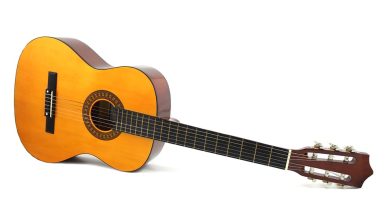Master the Art of String Changing with These Guitar Tips
Master the Art of String Changing with These Guitar Tips
Changing the strings on your guitar may seem like a daunting task, but with the right knowledge and technique, you can quickly become an expert at restringing your instrument. In this article, we will provide you with some valuable tips and tricks to help you master the art of string changing. By following these guidelines, you can ensure that your guitar always sounds its best and plays smoothly.
Choosing the Right Strings
Before you start the process of changing your guitar strings, it is essential to choose the right type of strings for your instrument. There are several factors to consider when selecting strings, including the gauge, material, and coating.
– Gauge: The gauge of a string refers to its thickness. Lighter gauge strings are easier to play but may break more frequently, while heavier gauge strings produce a fuller sound but can be harder on your fingers. It is essential to choose a gauge that is suitable for your playing style and comfort level.
– Material: Guitar strings are typically made from either nickel-plated steel, stainless steel, or phosphor bronze. Each material has its unique tone and feel, so it is essential to experiment with different types to find the one that best suits your playing style.
– Coating: Some guitar strings come with a coating that helps to extend their lifespan and prevent corrosion. Coated strings tend to last longer and maintain their tone better than uncoated strings, making them an excellent choice for players who do not want to change their strings frequently.
Removing the Old Strings
Once you have chosen the right strings for your guitar, it is time to start the string changing process. The first step is to remove the old strings from your instrument. To do this, follow these steps:
1. Loosen the tuning pegs: Start by loosening the tension on the strings by turning the tuning pegs counterclockwise. Be gentle when doing this to avoid damaging the pegs or the string.
2. Cut the strings: Once the strings are loose, use a pair of wire cutters to cut them near the bridge of the guitar. This will make it easier to remove the strings from the tuning pegs.
3. Remove the strings: Carefully unwind the strings from the tuning pegs and remove them from the bridge. Be cautious when handling the strings to prevent injury.
Cleaning the Guitar
After removing the old strings, take this opportunity to clean your guitar. Use a soft cloth to wipe down the body and neck of the instrument, removing any dirt or grime that may have accumulated. This will help to keep your guitar looking and sounding its best.
Stringing the Guitar
Now that you have removed the old strings and cleaned your guitar, it is time to string up your instrument with fresh new strings. Follow these steps to ensure a smooth and successful string changing process:
1. Insert the string: Start by inserting the end of the string through the bridge of the guitar and pulling it through until there is enough slack to wrap around the tuning peg.
2. Wind the string: Begin winding the string around the tuning peg, making sure to keep tension on the string as you turn the peg. This will help to prevent the string from slipping or becoming loose.
3. Tune the string: Once the string is securely in place, use a tuner to bring it up to pitch. Stretch the string gently to help it settle into place and hold its tuning.
Repeat these steps for each string, taking care to tune and stretch each one before moving on to the next. Once all of the strings are in place and tuned, your guitar will be ready to play.
Maintenance Tips
In addition to changing your strings regularly, there are a few maintenance tips that can help to keep your guitar in top condition:
– Wipe down your guitar after each use to remove sweat and grime that can build upon the body and neck.
– Store your guitar in a protective case or gig bag when not in use to prevent damage from dust, moisture, or impact.
– Have your guitar professionally set up and adjusted periodically to ensure optimal playability and sound quality.
By following these tips and techniques, you can master the art of string changing and keep your guitar sounding and playing its best. With practice and patience, you will become proficient at restringing your instrument and maintaining it for years to come.






